 |
||||||||||||
|
May/June 2017
BY MARC LEEPSON
He sang “The Ballad of the Green Berets” on The Ed Sullivan Show and on scores of other TV and radio shows and in-person events. He was lauded in a big photo spread in Life magazine. He got lots of ink in many other magazine and newspaper articles, nearly all of them pointing out that the young, handsome, clean-cut Special Forces sergeant was wounded while serving in the Vietnam War. In the process, Barry Sadler became America’s best-known Vietnam veteran. Somewhat lost in the Barry Sadler story (he died in 1989) are the details of his nine years of military service, including his 1964-65 tour of duty in the Vietnam War. Sadler overcame a rough childhood in the hardscrabble Rocky Mountain town of Leadville, Colorado, by following a well-trod path: He dropped out of high school and joined the Air Force, picking up his GED during his four years of honorable service as a radar technician. He left the Air Force because he didn’t want to be chained to a radar screen for four more years.
Barry Sadler served as a replacement medic at two Green Beret camps in the Central Highlands before landing at what would be his permanent unit, Detachment A-216 at Camp Hardy in Plei Do Lim. Sadler and the other A team medics treated Montagnard men, women, and children virtually on a daily basis. They performed minor surgery, gave inoculations, treated injuries, and even did rudimentary dental work. Sadler said he and his buddies were “overgrown social workers.” In the month of March alone, the medics performed more than a thousand outpatient procedures on Montagnard fighters, their dependents, and civilians. Sixteen patients required overnight stays at the camp dispensary; 295 received treatment outside the camp when the men went on medical patrols. They provided treatment for lacerations, punctures, fragment wounds, sprains, burns, and infected old wounds. The diseases they treated included dysentery, measles, chicken pox, mumps, tuberculosis, malaria, worms, and rheumatism. During their medical patrols outside the wire the medics also conducted sick calls, many for children. They also treated their own team members who had been injured or wounded. And they accompanied Montagnards into the field on combat and recon patrols and ambushes. Sadler took himself out of action on April 1 because of a medical situation of his own, a bad case of hemorrhoids. He underwent an operation at the Army’s 8th Field Hospital in Nha Trang and spent nearly three weeks there recuperating.
He was known as the guy in the unit with the guitar. “He’d pick and sing a little bit,” Jimmy Walker, the unit’s XO, said in an interview. “He even tried to teach me how to play it. He’d show me some chords and stuff.” He had started writing “The Ballad” during medic training, and continued to work on it at Camp Hardy, where he also wrote two other songs, “Garet Trooper” and “Letter from Vietnam.”
In March orders came in for Sadler to go to the USARV PIO office in Saigon. When he arrived, he was ordered to write a song for a general’s retirement party. Sadler dutifully complied. The PIO office took the opportunity to film him singing “The Ballad” in front of a bunker in Saigon, and distributed it to media outlets. A few days later at her mother’s house in Pennsylvania, Barry’s wife Lavona was getting ready to give her baby boy his afternoon bottle. “I was just sitting there and thought I’d catch the national news,” she said in an interview. “It came on around six. All of a sudden Barry was on singing ‘The Ballad.’ It was so weird. There he was, good looking and everything else and with that smile of his. And I was all alone in the house. There was no one there I could yell, ‘Hey, look!’ ”
Sadler managed to take his guitar with him. During his recovery at Clark he sang “The Ballad” for his wounded buddies, as well as a song called “Bamiba,” which he had written in Nha Trang. That tune plays tribute to 33 Biere, known to all Vietnam War veterans as “Ba Me Bam.” Barry Sadler left the hospital at Clark on July 20, 1965, and flew back to Fort Bragg. He wasn’t in great shape. He had lost more than forty pounds, weighing around 140. His cheeks were sunken, his eyes dull, his hair cropped short. When Lavona Sadler arrived at the hospital, she did not recognize her husband. “He was very skinny, very gaunt—terribly gaunt,” she said. “I was walking by him and then he called my name. He was in a hospital bed, and I honest-to-gosh didn’t recognize him at all.” It took a few months, but Barry Sadler recovered from the infected punji stick wound. He never stopped working on the song. The work paid off. He signed a recording contract with RCA Records on December 2, 1965. “The Ballad” came out on January 11, 1966. It hit No. 1 a few weeks later. The rest is pop music history.
|
||||||||||||
|
|
||||||||||||
|
||||||||||||
8719 Colesville Road, Suite 100, Silver Spring. MD 20910 | www.vva.org | contact us |
||||||||||||






















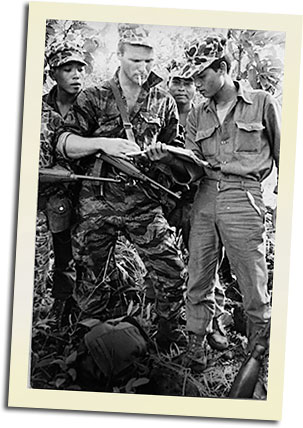 U.S. Army Special Forces Staff Sgt. Barry Sadler’s patriotic ode to the men who wore the Green Beret came out of nowhere in January 1966 to become the No. 1 single of the entire year. The song sold some nine million copies; the album sold two million. In the process, Sadler—who dropped out of high school to join the Air Force in 1958, served for four years, and then joined the Army—became a media darling.
U.S. Army Special Forces Staff Sgt. Barry Sadler’s patriotic ode to the men who wore the Green Beret came out of nowhere in January 1966 to become the No. 1 single of the entire year. The song sold some nine million copies; the album sold two million. In the process, Sadler—who dropped out of high school to join the Air Force in 1958, served for four years, and then joined the Army—became a media darling.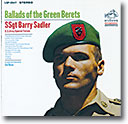 A self-taught guitar player, Barry joined a very-short-lived honky-tonk music trio back in Leadville. When the band quickly fell flat, he enlisted in the Army, volunteering for Airborne and Special Forces. In late December, six months after he finished the arduous SF medic training, Sadler said goodbye to his wife and infant son at Fort Bragg and deployed to Vietnam.
A self-taught guitar player, Barry joined a very-short-lived honky-tonk music trio back in Leadville. When the band quickly fell flat, he enlisted in the Army, volunteering for Airborne and Special Forces. In late December, six months after he finished the arduous SF medic training, Sadler said goodbye to his wife and infant son at Fort Bragg and deployed to Vietnam.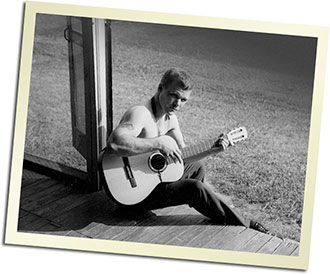 Some of the guys, including Lt. Walker, got along famously with Sadler, who heartily joined in off-hours beer-infused poker games and more than held his own on the occasional patrols outside the wire. Others didn’t have much use for any of the beer drinkers and felt Sadler’s musical ambitions distracted from the unit’s mission.
Some of the guys, including Lt. Walker, got along famously with Sadler, who heartily joined in off-hours beer-infused poker games and more than held his own on the occasional patrols outside the wire. Others didn’t have much use for any of the beer drinkers and felt Sadler’s musical ambitions distracted from the unit’s mission. 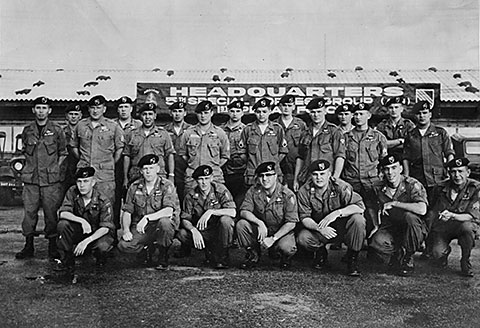
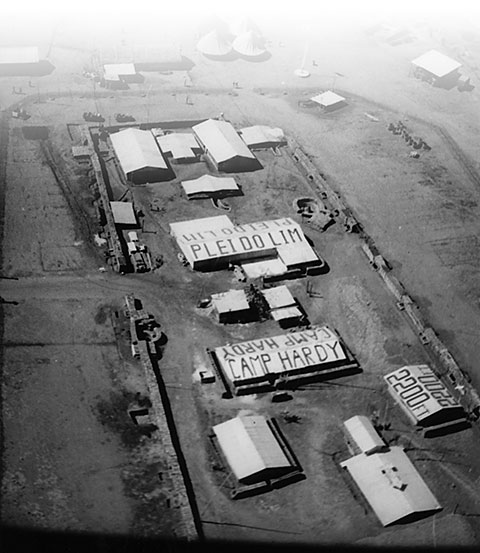 Two Green Berets were killed during Barry Sadler’s time at Camp Hardy: Staff Sgt. William LeGrand, who took pellets in the head and stomach when lightning ignited a Claymore, and Staff Sgt. Raymond Joe Vrba, Jr., who was killed in a VC ambush. Sadler became a casualty himself in mid-May. While out on patrol with the Montagnards, he walked into a punji stick that ripped into the side of his left knee. After a stint at the Field Hospital in Nha Trang, he was medevaced on an Air Force C-119 to the hospital at Clark AFB in the Philippines.
Two Green Berets were killed during Barry Sadler’s time at Camp Hardy: Staff Sgt. William LeGrand, who took pellets in the head and stomach when lightning ignited a Claymore, and Staff Sgt. Raymond Joe Vrba, Jr., who was killed in a VC ambush. Sadler became a casualty himself in mid-May. While out on patrol with the Montagnards, he walked into a punji stick that ripped into the side of his left knee. After a stint at the Field Hospital in Nha Trang, he was medevaced on an Air Force C-119 to the hospital at Clark AFB in the Philippines. 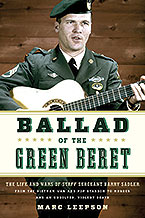 This article is adapted from VVA Veteran Arts Editor and Senior Writer Marc Leepson’s new book,
This article is adapted from VVA Veteran Arts Editor and Senior Writer Marc Leepson’s new book,